Gaming | September 30, 2023
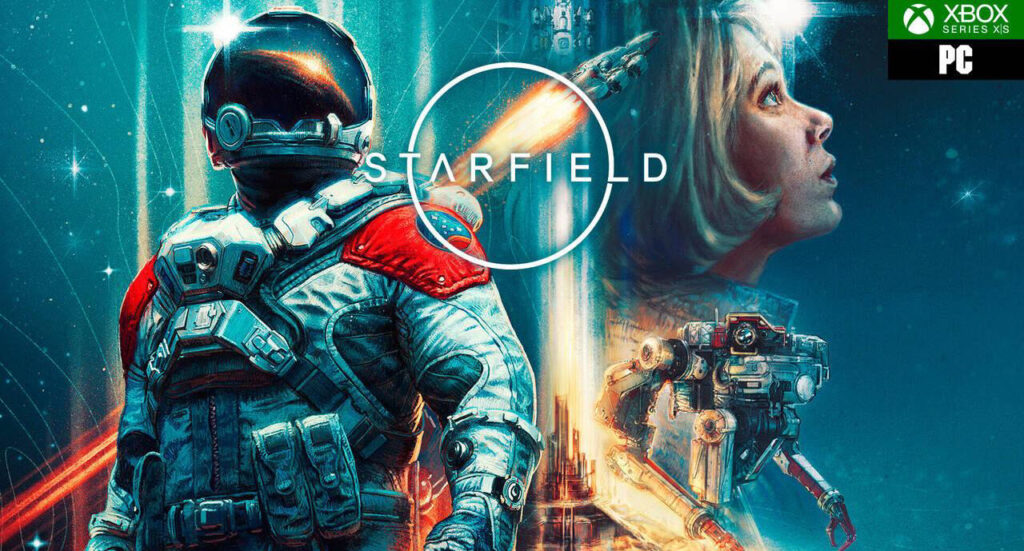
Bethesda has rightfully become one of the most respected studios when it comes to offering immersive role-playing games with detailed worlds, epic quests, compelling stories, breathtaking art, and a set of virtues that immerse players in a unique experience with each new title.
With this foundation, it is entirely normal for Starfield to be one of the most highly anticipated games of the year for PC and Xbox Series X/S players. It represents the most ambitious project to date from the American studio, aiming to deliver a gigantic space opera, albeit sometimes spreading itself thin instead of addressing recurring issues of the studio. Starfield is a game that is unique at times but falters in some aspects that do not live up to the potential of a game that, despite its flaws, can be incredible.
Starfield is a science fiction adventure in which humanity was forced to leave Earth several years ago, rapidly expanding into space and settling on other planets throughout the universe. Our journey begins in a remote excavation site where we discover a mysterious artifact that leads us to join the Constellation, a group of explorers with curious minds and deep pockets, aiming to uncover the secrets still hidden in the universe.
We won’t delve into more details of the plot beyond this beginning (what you’ve read so far corresponds to just the first 20 minutes of the game). However, we will share our impressions of the main storyline. In terms of the narrative, Starfield’s campaign offers a story that should captivate science fiction enthusiasts, allowing them to explore a unique universe through Bethesda’s game, both within the campaign and through the various documents or stories encountered. It sets the stage for a new video game saga that has the potential to be remarkable.
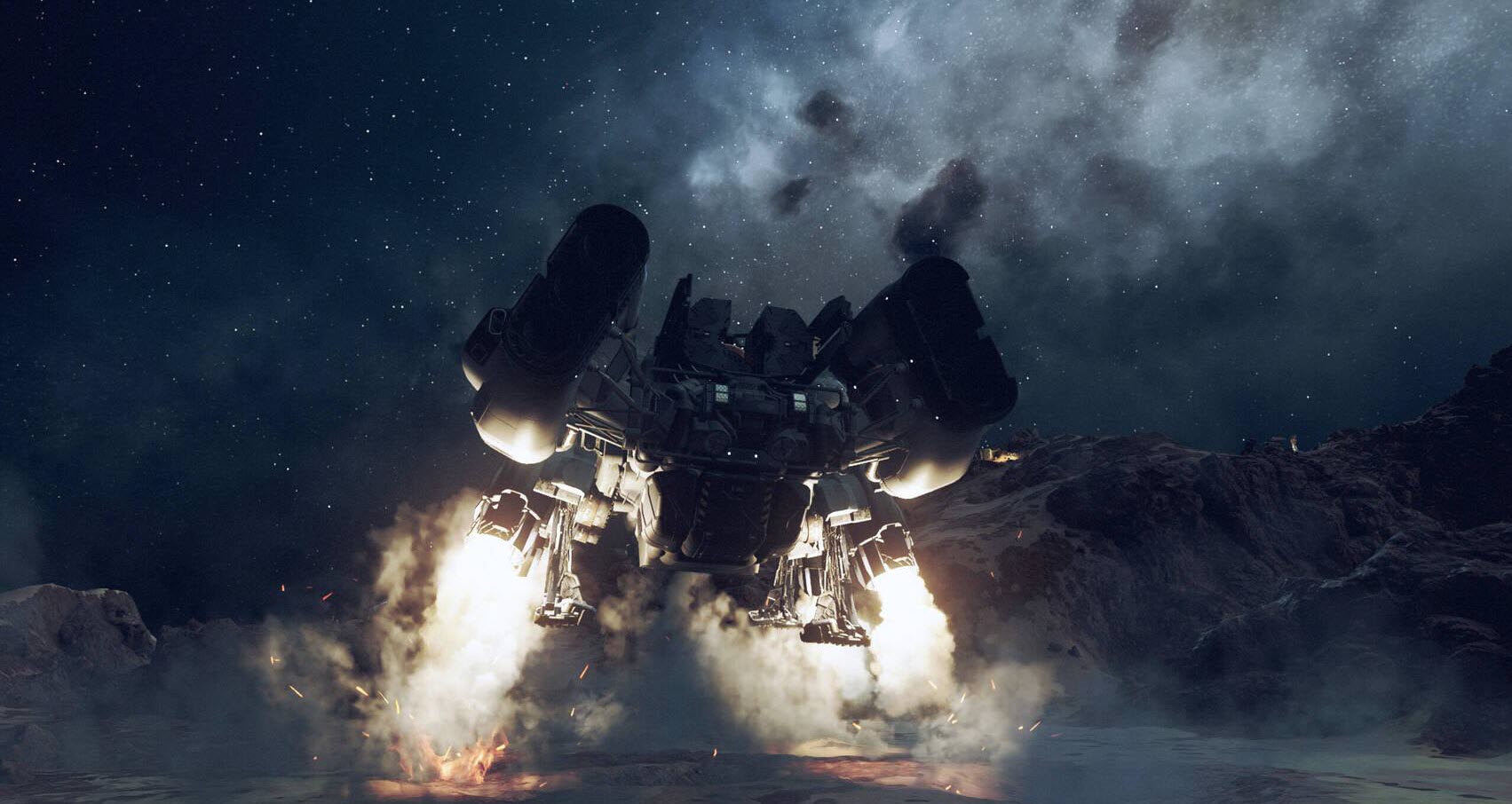
The main issue with the campaign lies not in its story, which, although it takes a while to get going, eventually tells a very interesting tale. Instead, it’s in the structure of its missions, which are often too basic and straightforward. At times, this can wear down the player, especially during the initial hours, unless they fully embrace their role as a space explorer, a point emphasized by various members of the Constellation.
Starfield is a role-playing game that demands that players fully immerse themselves in their role, be curious about exploring a distant building on a remote planet, an abandoned-looking space station, or eavesdrop on a random conversation in the middle of a square. It requires an open mind to get lost in the stars. In return for embracing this role, the game rewards players with incredible moments, unique quest chains as engaging as the main story, character enhancements that make the protagonist more powerful, and breathtaking views of the universe.
Since exploration is a key aspect of Starfield, let’s discuss it further, particularly its unique mechanics in space exploration. Pete Hines, Vice President of Bethesda, touched on this aspect in our recent interview, which you may have read on Vandal.
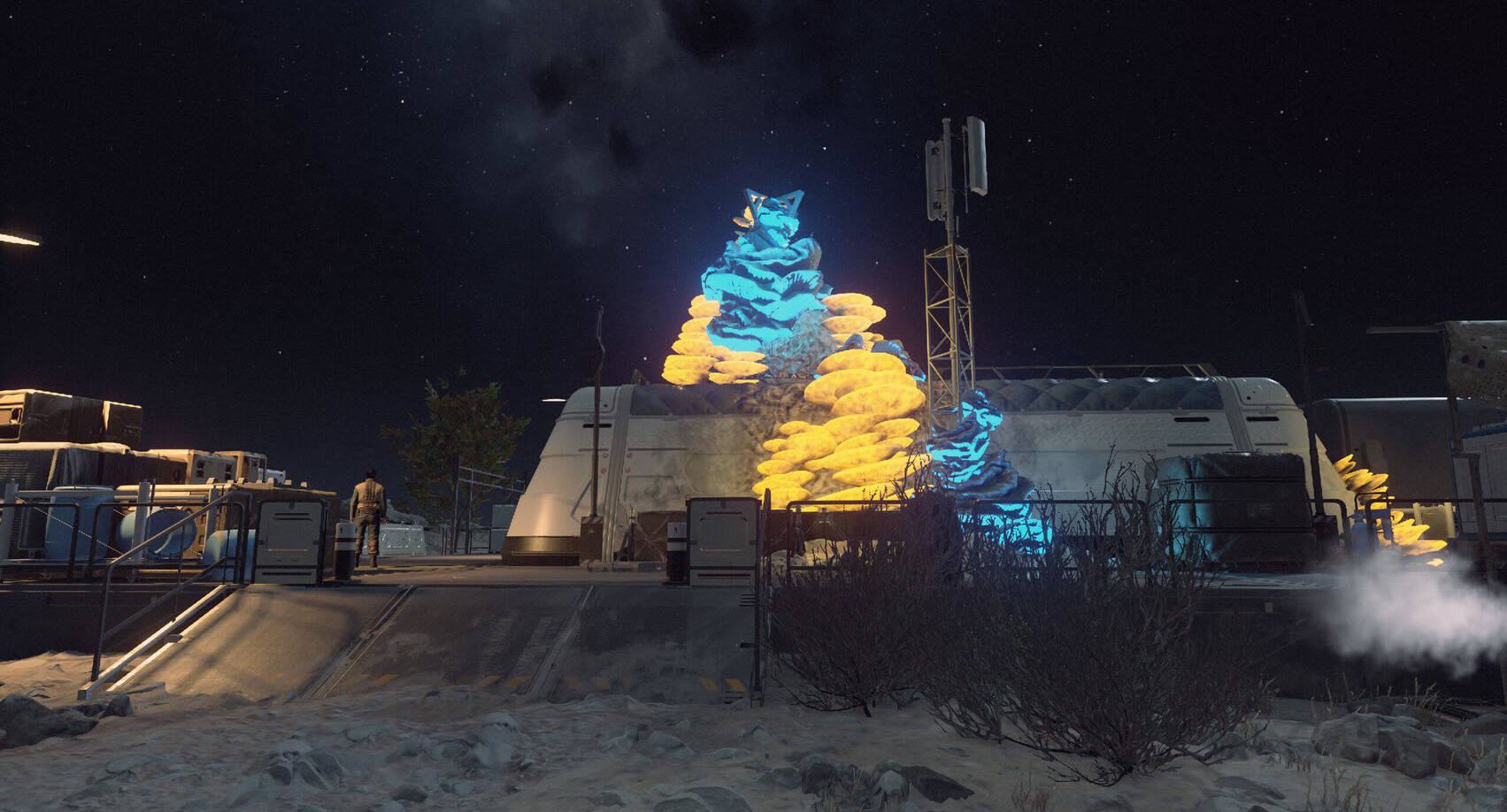
It’s important to clarify certain aspects of exploration in Starfield. It doesn’t offer a traditional “open world” but rather a mesh network structure in which players navigate from side to side in their spaceship, making different jumps or quick trips to explore the area around their ship on a planet or within a star system.
For instance, don’t expect to travel from one planet to another on your ship. Instead, interplanetary and interstellar travel is accomplished with a click, opening the universe map within your reach. What you can do is explore sections of the orbit of each planet, moon, or ring, encountering meteor showers, space debris, pirates, traders, abandoned stations, people in need of assistance, missions, special reports, family disputes, and all sorts of surprises.
A similar approach applies to planetary exploration. You cannot “fly inside” planets with your ship. Instead, you land at a selected point and explore around it, encountering various species, plants, resources, geographical features, ruins, buildings, and occasional surprises indicated on your tracker. If you venture too far from your ship, a warning appears, forcing you to return, acting as an invisible barrier to further progress.
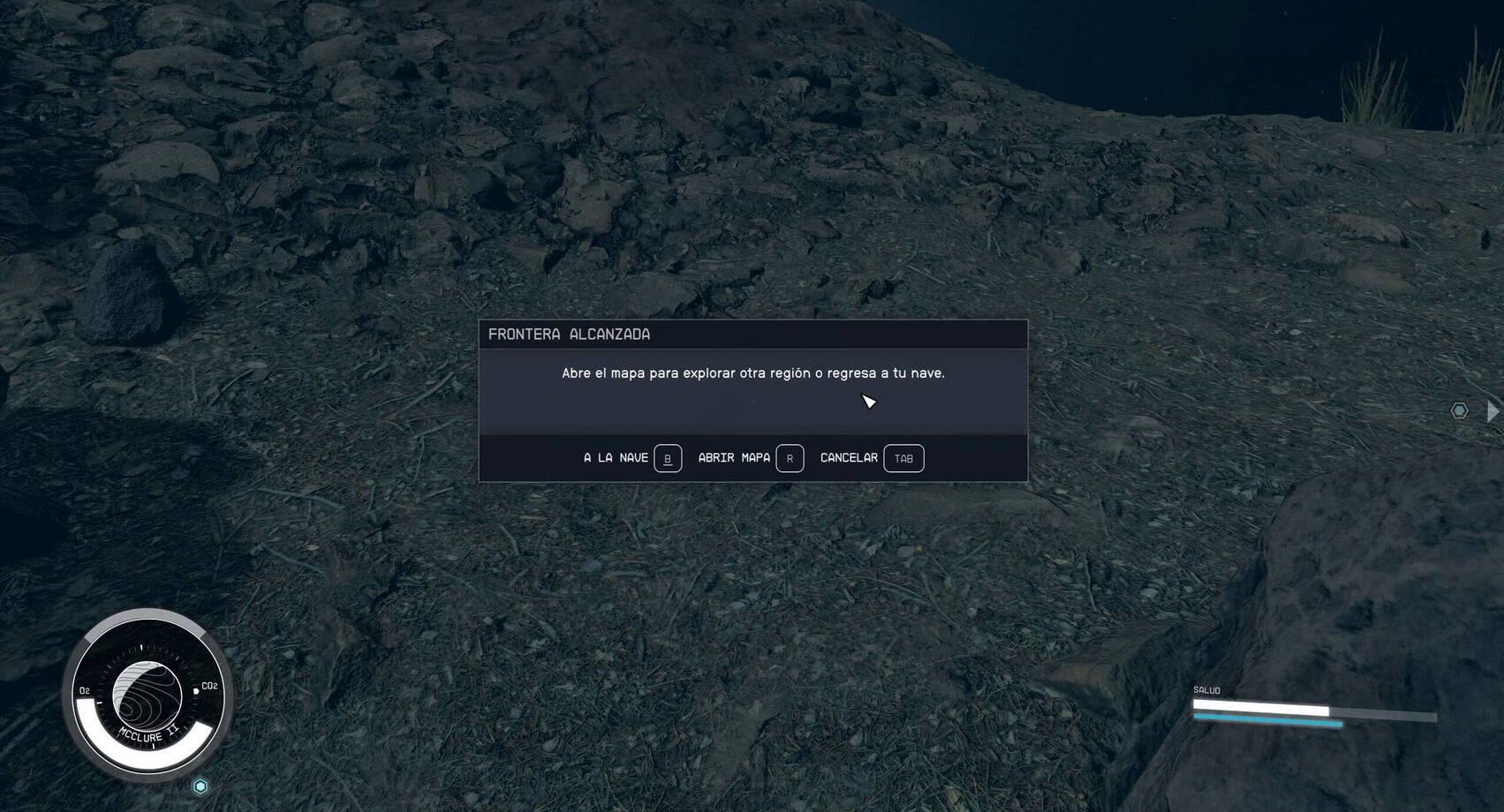
This doesn’t mean you can’t explore the entire planet; you can, but not by traversing it entirely on foot. Instead, you have to hop around the territory with your ship if you want to explore it thoroughly. It’s a design decision that may spark controversy, but from a personal standpoint, it doesn’t seem like a major issue. We conducted a timed experiment to find the invisible barrier by running our character in one direction for 11 minutes and encountered it. During this time, we came across various geographical features, animals grazing or fighting, certain buildings, and other elements that we could explore but chose to skip for the sake of the test. In reality, reaching that barrier would likely take much longer if you explore the planet organically.
Despite this, planetary exploration can vary significantly depending on the planet or area where you land. Sometimes you’ll encounter planets teeming with life, while other times you’ll find deserts of sand or ice with no signs of life. Exploration can lead to exciting missions, the discovery of outlaw hideouts, or encounters with unknown factions, while other times you may simply take a leisurely stroll, scanning flora, fauna, or rocks to determine if it’s suitable for resource collection.
This contrast between planets is expected in a densely populated universe with numerous places to visit. However, it raises the question of whether a smaller scale with a higher density of activities, wildlife, and iconic locations might have been a better approach. That’s not to say Starfield lacks these elements; it has many of them. Nevertheless, it can be challenging to find them at times, and planets or areas with little to offer may serve as mere decorative additions that don’t contribute much and may dampen the expectations of certain players.
In summary, the design structure of exploration might appear somewhat dated, and we’re confident it will spark controversy. A grand scale with planets having somewhat empty zones may not offer as much as a slightly less ambitious approach in terms of dimensions might have. Despite this, we want to emphasize that we thoroughly enjoyed exploring the Starfield universe. We allowed ourselves to get carried away in the role of explorers, investigating a mysterious building that appeared on our radar or the icon of a ship that appeared on our space map, leading to… well, we won’t spoil it, but it was something cool.
Combat is a significant aspect of Starfield, and it has its strengths and weaknesses. The surface-level feel of the shooting mechanics is quite good, with precise aiming when using a mouse (we primarily played on PC), a wide range of weapons to cater to all preferences, and enjoyable shooting and encounters with enemies in the game.
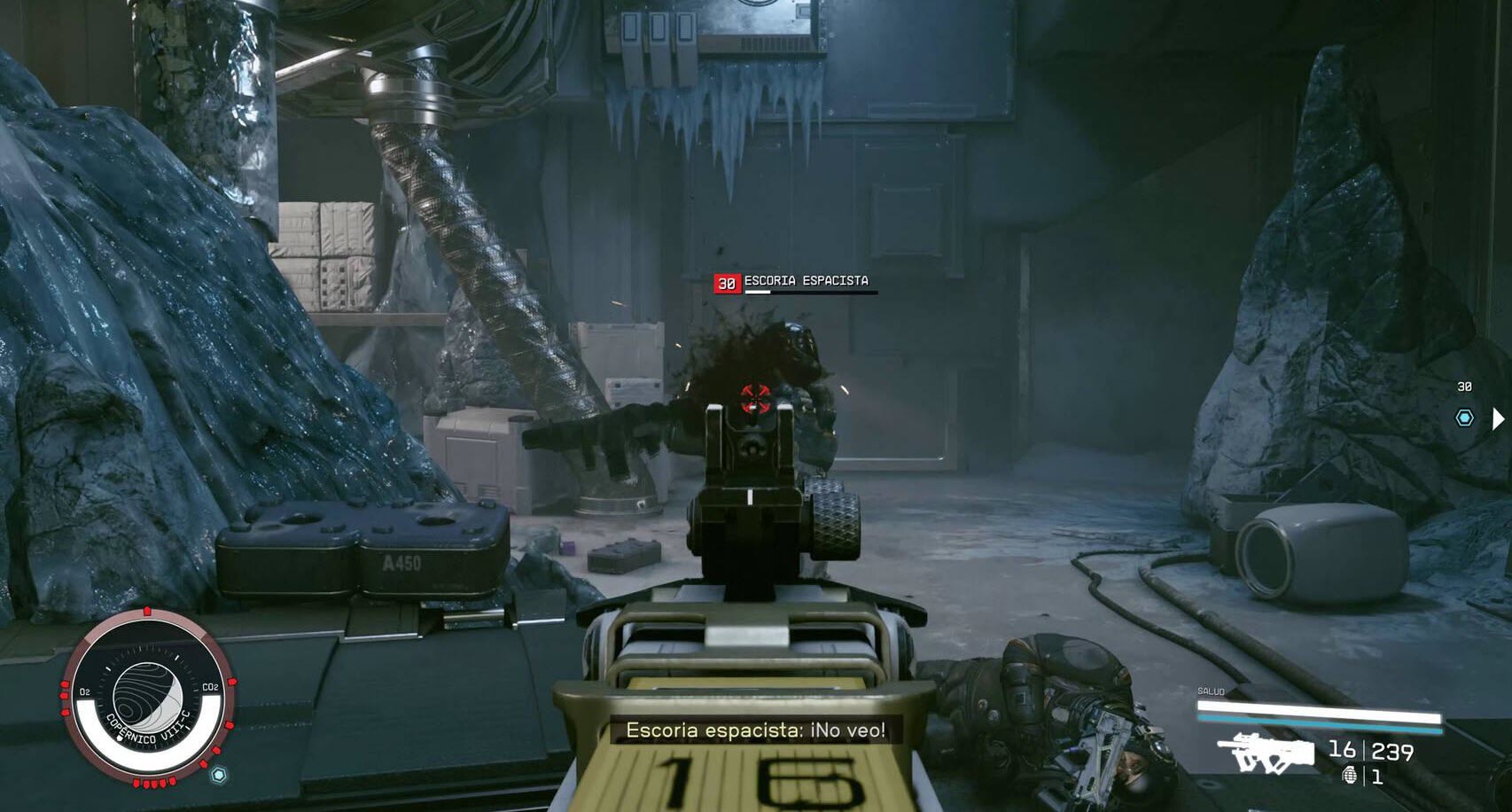
However, when delving deeper, we encounter some of the classic issues found in Bethesda’s titles. Enemy AI is somewhat lacking, certain hitbox issues fail to register some shots, and there are moments when enemies react to our shots, their health decreases, but they continue firing without flinching. Additionally, the stealth system employs the same formula as other games from the studio and is far from satisfying.
This is a critical point that Bethesda should have addressed long ago, especially considering their access to studios known for their excellent shooter games, such as MachineGames and id Software, which could have assisted in addressing these issues. Moreover, it’s surprising that Bethesda didn’t include NVIDIA’s DLSS technology, which offers better performance and image quality. Considering that AMD claims to have allowed Bethesda to use technologies from other brands, the absence of DLSS or alternatives like Intel’s XeSS is puzzling.
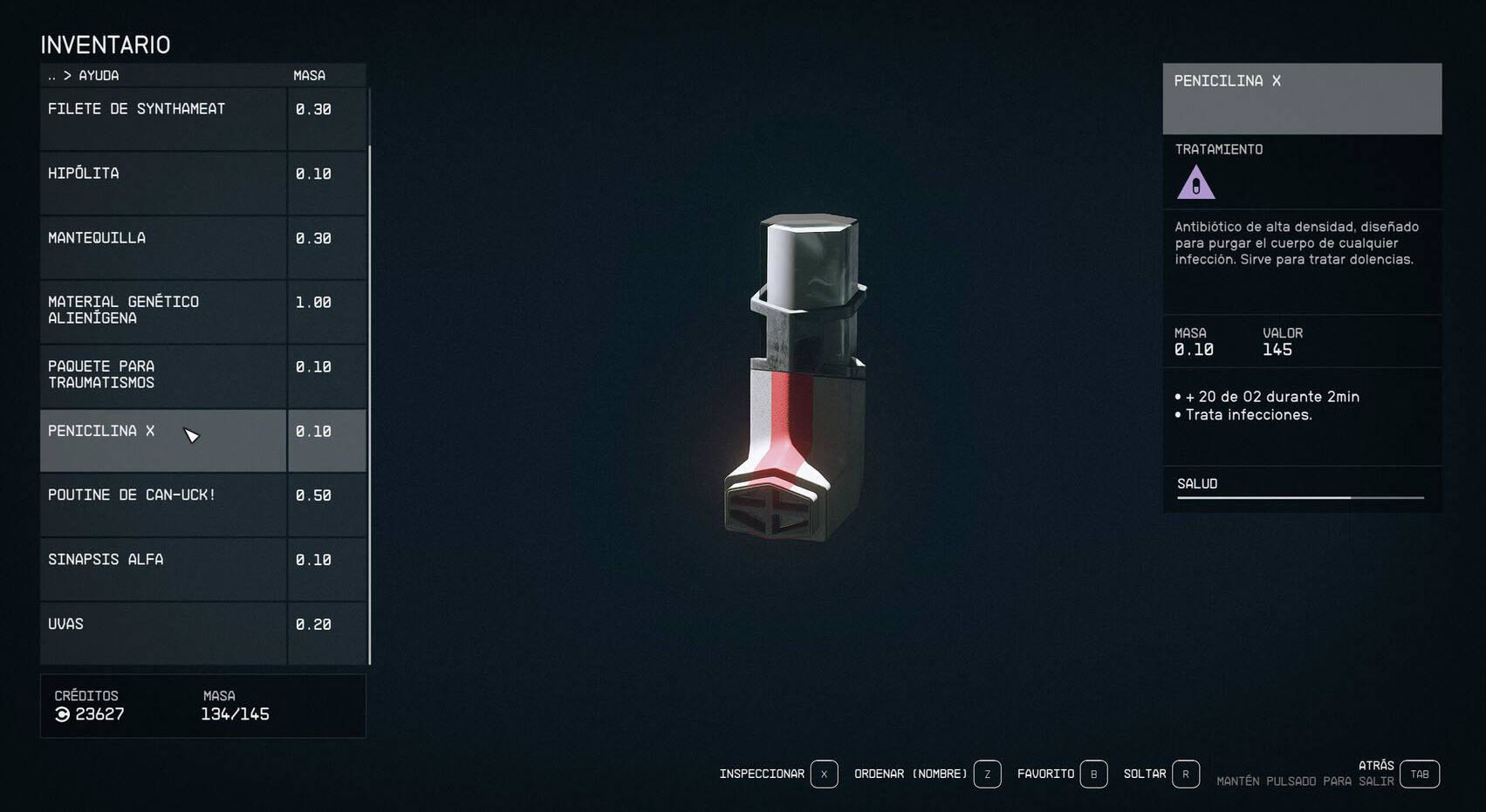
We also want to touch on the health recovery mechanics. In Starfield, we not only need to heal wounds but can also experience various status effects such as breaking a bone from a fall, getting poisoned by toxic gas, suffering from extreme temperatures, or bleeding from sharp weapon wounds. While the idea of curing status effects is interesting, it is somewhat underutilized in the game, although it might play a more significant role in a future survival mode where diseases, status effects, and other factors could become pivotal to the adventure.
Companions play a vital role in Starfield. Players can interact with them, learn more about the universe created by Bethesda through their stories, engage in romance options, and have them accompany you throughout the game, providing support in combat and even collecting items you may have missed along the way.
If you choose to bring companions with you, their help in combat can be invaluable. They provide extra damage during confrontations and sometimes draw enemy fire. While their artificial intelligence may not be top-notch, they can still be useful, as they never die during the game—a decision we don’t entirely agree with. Allowing companions to fall in combat in certain situations could have added more tension and depth to the gameplay.
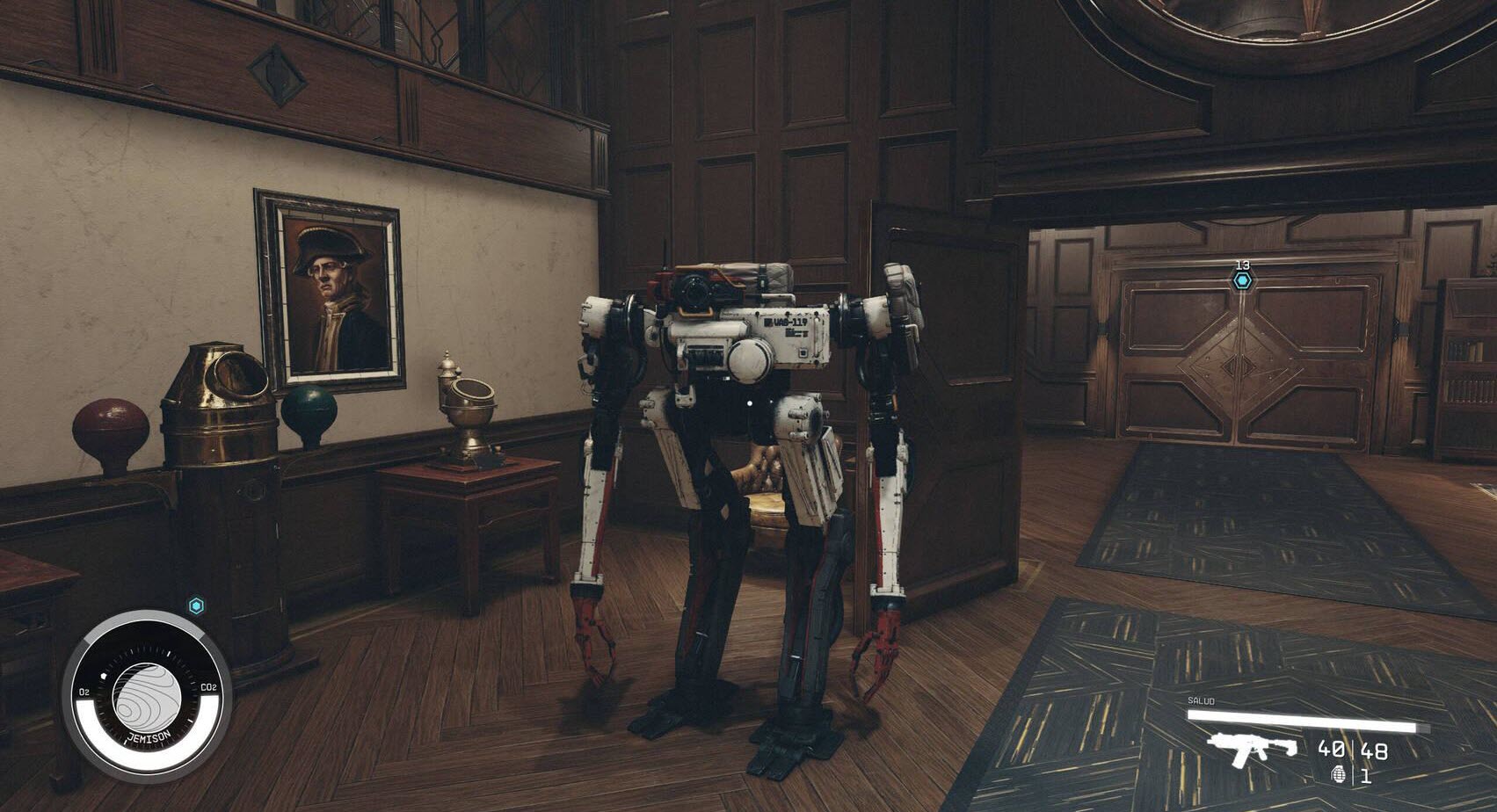
Expanding on the topic of companions, let’s discuss dialogue options and interactions with other characters. Players have the opportunity to make their character a skilled conversationalist, capable of conversing, intimidating, deceiving, or persuading others to achieve their objectives. However, the persuasion mechanics, involving selecting the correct phrase to manipulate the target, can be repetitive and do not live up to the standards expected in a 2023 role-playing game. This is one of the aspects of Starfield that we found least satisfying.
Another key aspect of Bethesda’s game is the spaceship, your second home, a faithful companion used for traveling to different systems, combat, piracy, exploration, trade, and various activities.
Initially, Constellation provides players with a beginner’s ship that they can customize to their liking, adding new weapons, engine enhancements, shield upgrades, making it more formidable in combat or allowing longer-distance travel, a crucial feature at certain points in the game.
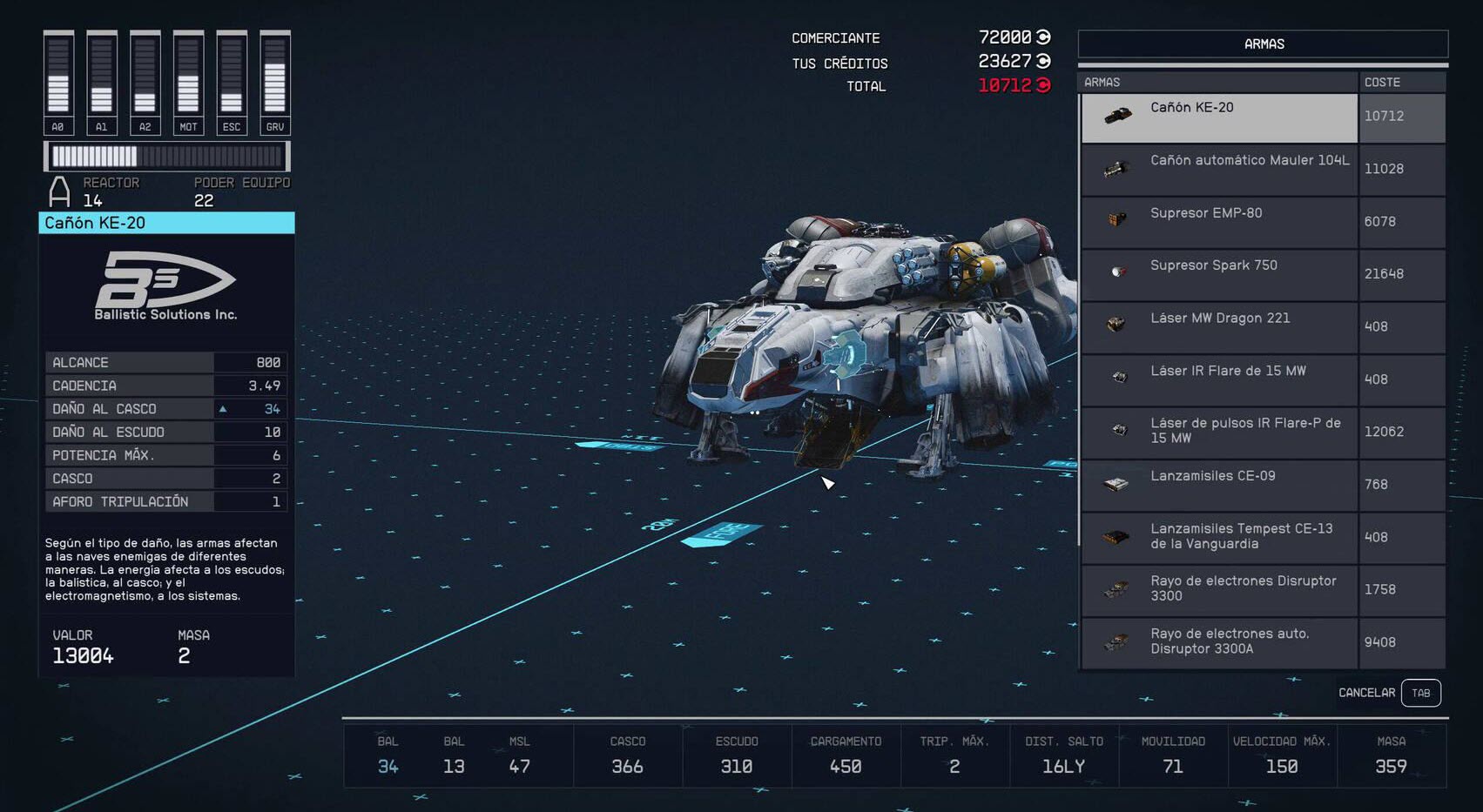
Players also have a variety of ships they can purchase based on their intended use. They may opt for a massive cargo ship with a spacious hold for trading supplies or contraband, including hidden compartments, or they could choose a powerful combat vessel to defend against hostile factions encountered during their journey, become feared pirates, or star bounty hunters. The possibilities for selecting a ship are diverse, and options change based on the planet, ship brand, or where you wish to make your purchase.
The spaceship’s controls are accessible and intuitive, making players feel like space pilots, allocating energy between weapons, shields, engines, and the gravitation jump drive depending on the situation. As for space combat, it’s enjoyable to chase other ships, lock onto targets, use missiles or lasers to damage and destroy them, or board them after inflicting sufficient damage. In this regard, we are satisfied with what Starfield offers.
So far, we’ve covered the fundamental pillars of Starfield, including its story, exploration, combat, and the world of spaceships. These are the “basic” concepts that only scratch the surface of what Bethesda’s game has to offer.
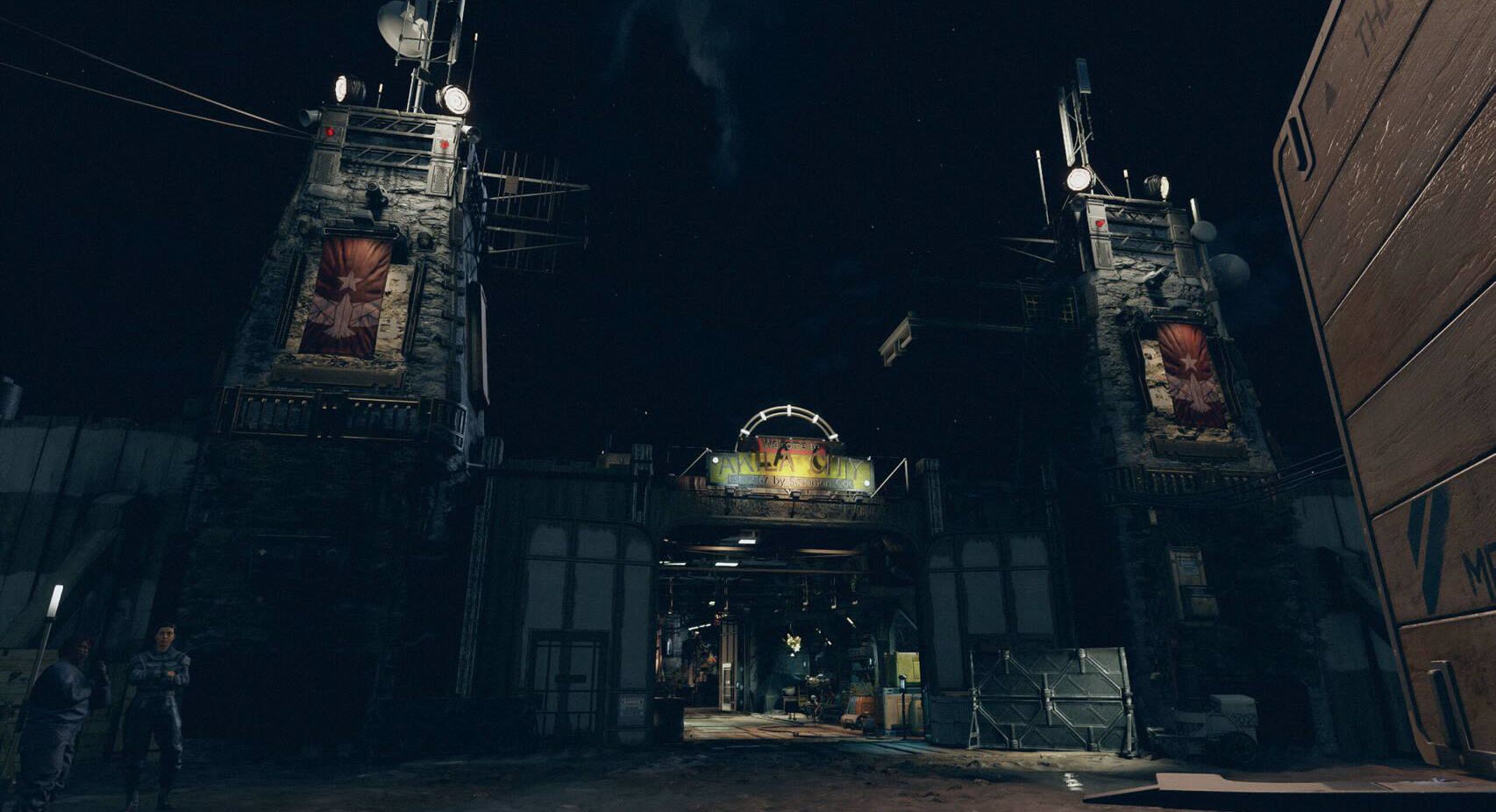
For the more adventurous players who want to go “full throttle” through the main campaign, there is a New Game+ option to explore the video game more leisurely. We highly recommend this option because the initial storyline is just an introduction to a new universe that is here to stay.
Speaking of side quests, be prepared for adventures that rival the main campaign. You’ll investigate strange occurrences, save the world, act as diplomatic intermediaries, and encounter a wide range of colorful situations that we won’t spoil to preserve the surprise. Keep in mind that what may start as a simple errand can turn into something truly epic.
Beyond the side quests, there is plenty to do in Starfield. The game offers a wide range of possibilities for character skill creation and modification, as well as activities to engage in during the playthrough. Players can take on the role of a space pirate, engage in smuggling, establish a base on a remote planet to exploit its resources and trade them, purchase an apartment in a large city and customize it to their liking, and, in essence, live as they please in the rich universe of the game.
While many of these activities are mere pastimes and may not have a real purpose since completing the adventure can be accomplished by completing missions and receiving rewards to upgrade your equipment, buy better weapons or ships, these activities still give players the opportunity to immerse themselves in various roles—a core aspect of role-playing games that is well-executed in Starfield.
Let’s discuss the artistic aspect of Starfield, which is simply superb. The game excels in its design of large cities, dungeons, spaceships, buildings, hotels, systems, and some breathtaking planetscapes that leave players in awe. I’ve never taken so many screenshots using the in-game photo mode in any other game, but Starfield’s universe is incredibly photogenic.
Moreover, the soundtrack features exquisite pieces that fully immerse players in the game. It evokes strong emotions and enhances the overall experience. Accompanied by well-done text translations and voice acting in our language.
Regarding the technical aspect of the game, Starfield appears to be quite polished in our playthrough. While we did encounter some classic bugs, such as characters floating in the air, physics errors with certain objects, and somewhat clumsy AI in combat, as mentioned earlier, there were no major issues in the PC version of the game, which is where we spent most of our time and completed the game.
In terms of performance, we played Starfield on a system equipped with an NVIDIA GeForce RTX 4080 graphics card, enjoying Ultra graphics settings, AMD FSR in quality mode, and a 1440p resolution, achieving between 80 and 115 FPS depending on whether we were indoors or on a planet’s surface. This frame rate can be considered acceptable but should be higher, considering that the game’s graphics, while good, are not revolutionary (Starfield’s visual impact lies in its art rather than its textures). In fact, we also tested the game with an AMD Radeon RX 6700 XT, a GPU designed for 1440p gaming, and achieved around 60/80 FPS on medium graphics settings, which raises concerns about performance with less powerful GPUs.
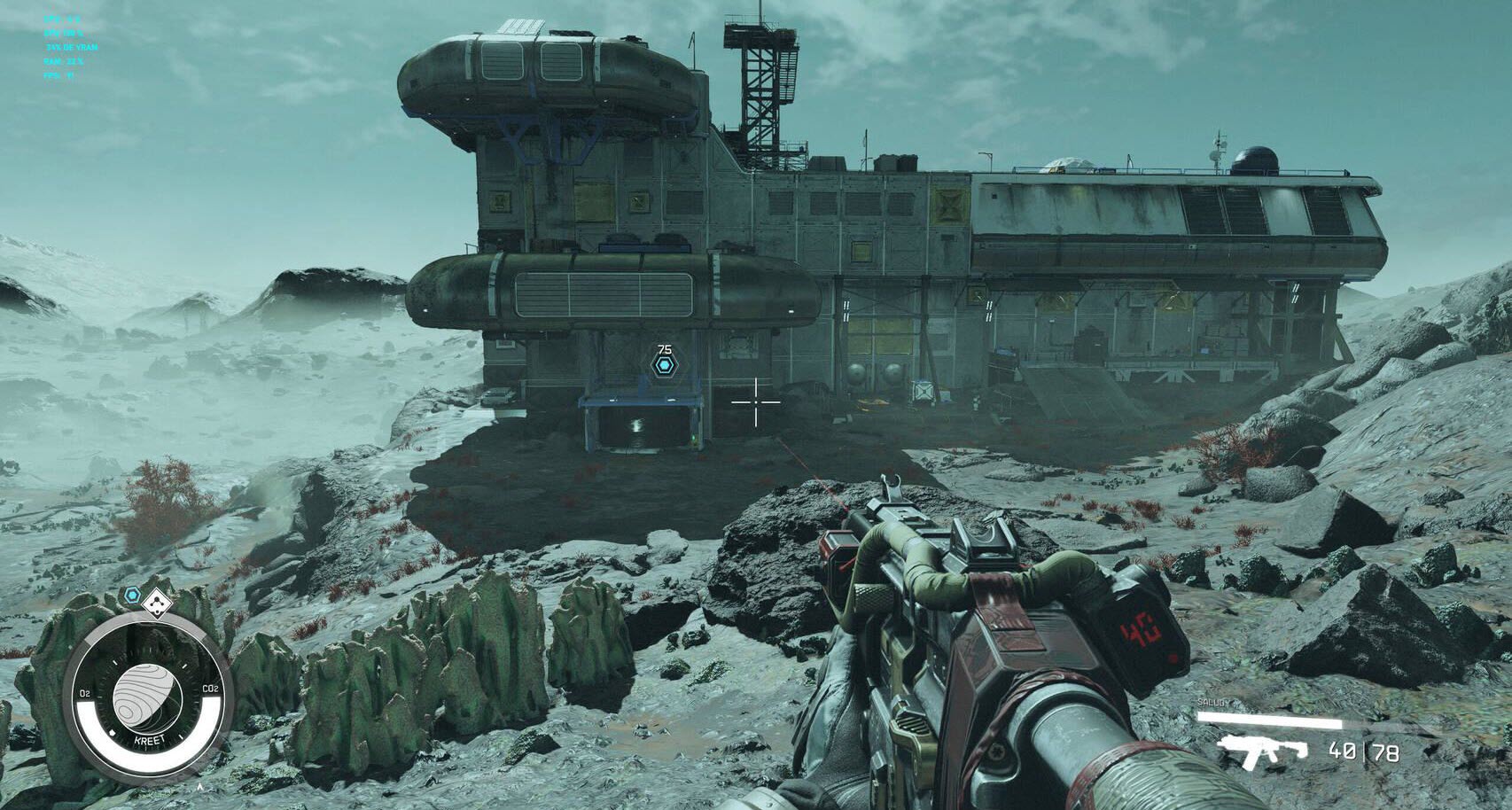
Additionally, given that AMD claims not to have restricted Bethesda from using technologies from other brands, it’s puzzling why the American studio did not include NVIDIA’s DLSS technology, which currently offers better performance and image quality, or Intel’s XeSS, which is also a viable alternative.
We also spent a few hours playing on Xbox Series X, and performance-wise, the game seemed very stable. At least during the initial hours of gameplay, we didn’t encounter any major bugs beyond those mentioned earlier, and the FPS remained steady at 4K and 30 FPS.
Starfield is a very special game, one that we believe will captivate many players, allowing them to experience a unique space opera filled with secrets, alternative plots, unexplored corners, surprises, and breathtaking landscapes that take our breath away, turning Bethesda’s creation into a great work.
However, those who do not immerse themselves in the role of a space explorer may be disappointed with a game that still features classic Bethesda issues, such as improvable combat mechanics, somewhat simplistic dialogue options, a somewhat basic structure for many missions (compensated for by the random discoveries made during them), and, in general, lingering flaws that Bethesda has failed to address, preventing this good game from achieving excellence.
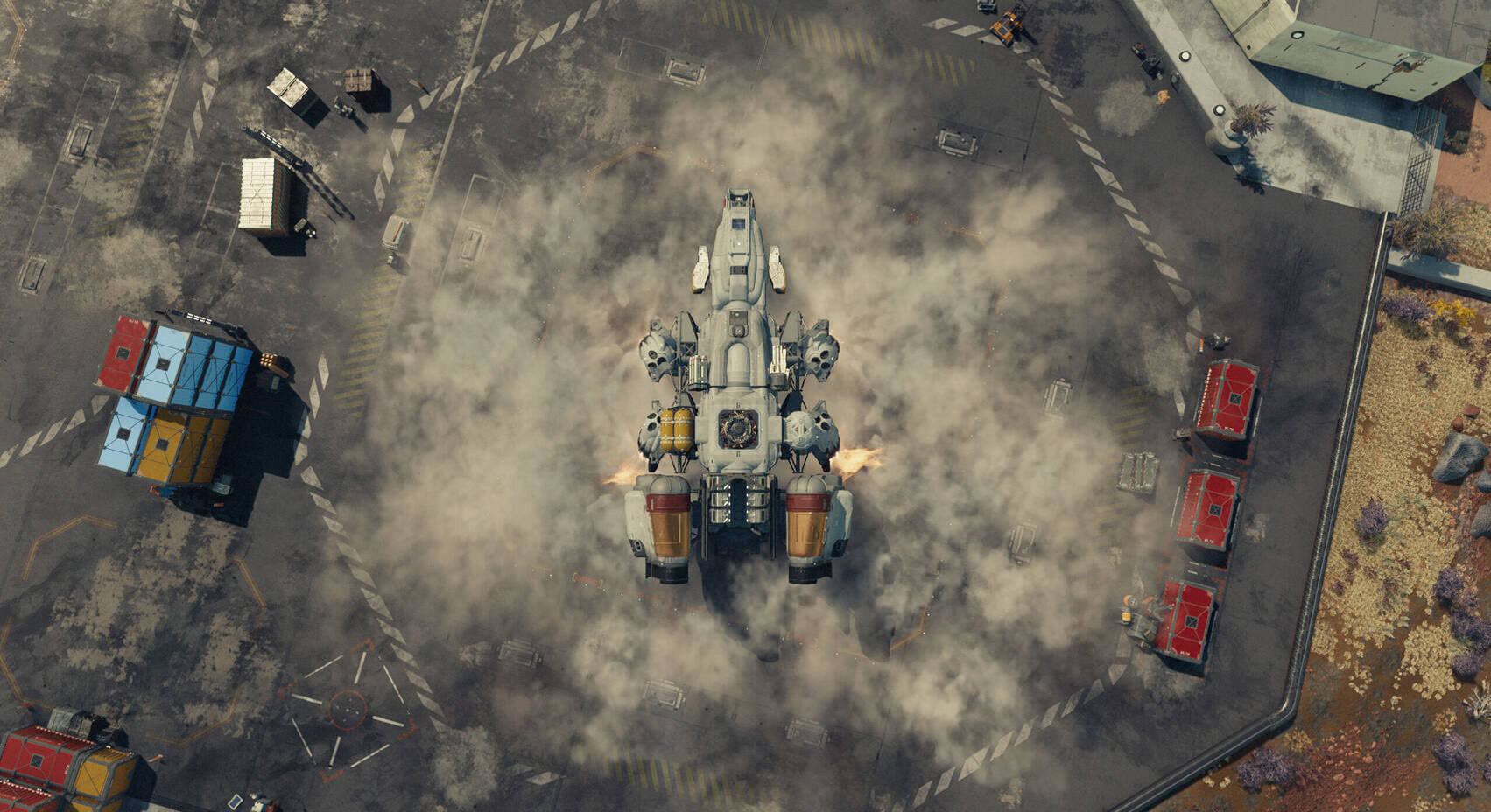
We can guarantee that Starfield will delight fans of space operas and science fiction. It will certainly be a hot topic in the coming weeks as players uncover the many secrets hidden within its universe.